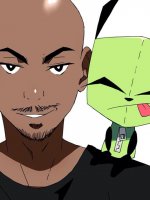So you're a Brawl player trying to hold their own in Project M. You've got the new fundamentals mastered. You've adjusted to the increase in gameplay speed. Wavedashing is easy peezy. SHFFL'ing is a piece of cake. Ledge hogging gives you more invincibility. Blah blah blah. You get it. However, there are still several Melee mechanics that you probably weren't aware of that exist in Project M. Let's take a look at few techniques that you can use to level up your Project M game.

Sit down, sonny. There's still much for you to learn.
"But Omni, I already know what crouch cance-.." I know, I know. Everyone knows. At least, they think they know, but the intricacies of crouch cancelling tend to be heavily overlooked.
In Brawl, crouch cancelling only reduces the amount of hit lag received after absorbing an attack. In Project M, crouch cancelling works more consistently with Melee where both knock back and damage is reduced when crouch cancelling. What this means is that crouch cancelling allows you to "parry" an attack and sometimes respond with a counterattack BEFORE the assailant has fully recovered from their original attack.
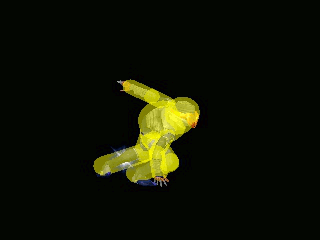
"Got it. Hold down. Spam fastest smash attack, right?"
Only if you're Drephen.
When crouch cancelling there are four (4) scenarios that may occur.
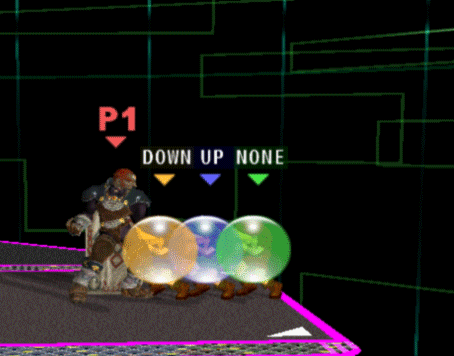
We livin'.
I did mention a fourth scenario: CC'ing Meteors & Spikes. Neither of these are a good idea, but more so with spikes than meteors. Meteors are special attributes that allows your character to recover from an attack that sends the player downward by jumping at the right timing (meteor cancelling). Spikes, however, cannot be cancelled as the player must endure the full duration of the hit stun until it wears off. Both moves are designed with so much hit stun that absorbing these attacks through crouch cancelling becomes a fruitless endeavor.
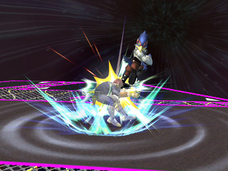
Go ahead and crouch cancel against Falco. I d-air you.
Puns aside, it is unwise to crouch cancel against certain characters. Specifically, characters with spammable meteors/spikes like Falco, Fox, Lucas, or Captain Falcon deal with crouch cancelling extremely well. One character in particular can net over 70% in damage with just one smash attack if the opponent attempts to crouch cancel their attack. You know who I'm talking about.

The mother of all smash attacks.
Despite the setbacks, crouch cancelling for the most part has more pros than cons. One might suggest that crouch cancelling has an overwhelming affect on match-ups. Characters that remove crouch cancelling as a viable option tend to be classed toward the higher tiers. Assuming that you can crouch cancel safely, what you do after a successful crouch cancel can be based on many variables.
One option in particular, grabbing after successfully crouch cancelling, is an especially useful tool. For example, Sheik's dash attack has a tendency for popping up characters into the air in range for follow up combos. However, if you crouch cancel grab at lower %'s you'll find that you can exchange a small amount of percentage for an even better grab setup! This brings a whole new meaning to the concept of trading in Smash.
In Brawl, shielding was an extremely strong defensive tool because there was very little downtime after releasing your shield. A power shield (pressing shield right before an attack lands) virtually had zero downtime after releasing your shield. In Project M, however, manually releasing your shield takes more time. This lag time has allowed players to find creative ways of exiting out of one's shield. One of which we will discuss now: Shield Dropping.
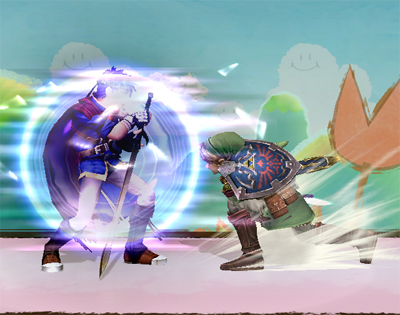
Releasing your shield can lead to dire consequences.
Shield dropping is the ability to fall through platforms while in your shield animation. Sounds simple and basic, right? Yes, but the implementation of this move falls under one of the more difficult tech skills for players to master. Slamming down while holding shield gives us a sidestep, but slowly tilting downward while holding our shield simply angles the shield downward. However, there is a middle point where if you press down slow enough that you DON'T sidestep, but fast enough so that you DON'T angle your shield down you can fall through a platform.
This oldie but goodie video goes in detail about the mechanics of shield dropping.
As you're now starting to see the potential, shield dropping gives characters more platform mobility as well as more counterattack options. An easier way to perform this technique is as follows:
Phew. A much easier tech compared to shield dropping. And yet... still underused by most Brawl players. Why is this?
In Brawl, we've already discussed how releasing your shield was a viable OoS option. However, rolling OoS was also extremely strong in Brawl due to the ability to act much quicker after a roll compared to its Melee counterpart.

Worried about tornadoes?
Meta Knight's forward roll recovered so fast it was close to impossible to punish.
Because of this most Melee players have been bred to abuse players who roll while most Brawl players tend to think that rolling is a safe option. Which is wrong. And which is why wavedashing OoS is so important. Assuming that you already know how to both wavedash and shield we'll skip the "how to's" but stress the importance of how you choose to leave your shield. The next time you're watching a high level smash match pay attention to how these players leave their shield.
Our final technique, ledge dashing, has always been both a gift and a curse. But let's review how ledge dashing works:
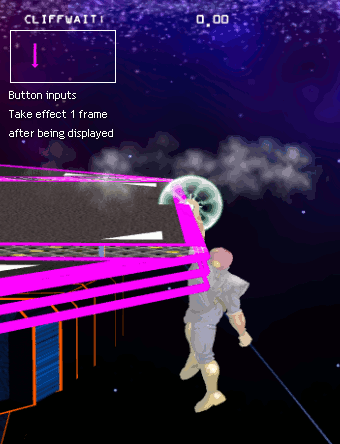
This technique, used by many Captain Falcons, was made most popular by Hax.
The picture above shows Captain Falcon jumping onto the stage and air dodging backwards into the ground to grab the ledge again. During this entire time, Captain Falcon retains invincibility and cannot be harmed. While the picture shows Captain Falcon going backwards, it is possible to hug the ledge and wavedash onto the stage while still retaining your invincibility frames left from initially grabbing the ledge. This can lead to full frontal, invincible attacks.
Which brings us back to why this technique is both a gift and a curse. The invincibility retained while coming back onto the ledge is where the gift therein lies. However, the high risk of this technique is where the curse comes into play. Mistiming this technique just by one frame can lead to the player air-dodging in place and falling to their doom.
This can also lead to very anti-climatic endings.
The infamous "failed ledgedash self destructs" have been seen a staggering amount of times by even the best players. The worse application of this technique, however, is when players fail this technique while being at extremely low %'s or when the opponent is not threatening their recovery at all. Which is why it is important for players to always measure the risk-reward of this move as no one has proven to pull this technique off 100% without fail.
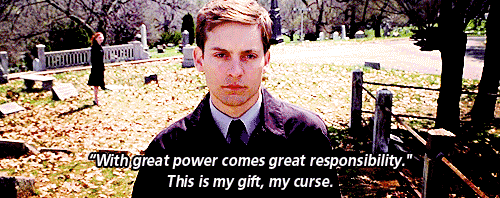
Uncle Ben and Peter Parker are familiar with the perils of ledge dashing.
And there you have it (again). There are still many unused Melee mechanics in Project M that are unused by Brawl-only players. If you want to take your Project M game to the next level, be sure not to neglect these more foreign elements of the game.
Be sure to check out From Melee to Project M: The Underused Techniques You're Probably Not Using if you haven't already! The first half of this two-part series explains techniques Melee-only players may be missing out on.
Omni is a video game enthusiast, Smashboards writer, and an anime junky.
Follow and message him on Twitter: @InfernoOmni if there are any article ideas YOU would like see appear here.

Sit down, sonny. There's still much for you to learn.
------------------
 ------------------
------------------

Crouch Cancelling
"But Omni, I already know what crouch cance-.." I know, I know. Everyone knows. At least, they think they know, but the intricacies of crouch cancelling tend to be heavily overlooked.
In Brawl, crouch cancelling only reduces the amount of hit lag received after absorbing an attack. In Project M, crouch cancelling works more consistently with Melee where both knock back and damage is reduced when crouch cancelling. What this means is that crouch cancelling allows you to "parry" an attack and sometimes respond with a counterattack BEFORE the assailant has fully recovered from their original attack.

"Got it. Hold down. Spam fastest smash attack, right?"
Only if you're Drephen.
When crouch cancelling there are four (4) scenarios that may occur.
- CC'ing at Low %'s - Can almost act immediately after an opponent's attack
- CC'ing at Mid %'s - Pushes the CC'er slightly back and/or forces a hard knockdown
- CC'ing at High %'s - Pushes the CC'er significantly back and/forces a hard knockdown

We livin'.
I did mention a fourth scenario: CC'ing Meteors & Spikes. Neither of these are a good idea, but more so with spikes than meteors. Meteors are special attributes that allows your character to recover from an attack that sends the player downward by jumping at the right timing (meteor cancelling). Spikes, however, cannot be cancelled as the player must endure the full duration of the hit stun until it wears off. Both moves are designed with so much hit stun that absorbing these attacks through crouch cancelling becomes a fruitless endeavor.

Go ahead and crouch cancel against Falco. I d-air you.
To Crouch Cancel or not to Crouch Cancel?
Puns aside, it is unwise to crouch cancel against certain characters. Specifically, characters with spammable meteors/spikes like Falco, Fox, Lucas, or Captain Falcon deal with crouch cancelling extremely well. One character in particular can net over 70% in damage with just one smash attack if the opponent attempts to crouch cancel their attack. You know who I'm talking about.

The mother of all smash attacks.
Despite the setbacks, crouch cancelling for the most part has more pros than cons. One might suggest that crouch cancelling has an overwhelming affect on match-ups. Characters that remove crouch cancelling as a viable option tend to be classed toward the higher tiers. Assuming that you can crouch cancel safely, what you do after a successful crouch cancel can be based on many variables.
One option in particular, grabbing after successfully crouch cancelling, is an especially useful tool. For example, Sheik's dash attack has a tendency for popping up characters into the air in range for follow up combos. However, if you crouch cancel grab at lower %'s you'll find that you can exchange a small amount of percentage for an even better grab setup! This brings a whole new meaning to the concept of trading in Smash.
------------------
 ------------------
------------------
Shield Dropping

Shield Dropping
In Brawl, shielding was an extremely strong defensive tool because there was very little downtime after releasing your shield. A power shield (pressing shield right before an attack lands) virtually had zero downtime after releasing your shield. In Project M, however, manually releasing your shield takes more time. This lag time has allowed players to find creative ways of exiting out of one's shield. One of which we will discuss now: Shield Dropping.

Releasing your shield can lead to dire consequences.
As you're now starting to see the potential, shield dropping gives characters more platform mobility as well as more counterattack options. An easier way to perform this technique is as follows:
- Buffer left or right on the analog stick
- Press and hold shield (while still holding left or right)
- Move from horizontal 90 degree angle immediately to the corner 45 degree angle
------------------
 ------------------
------------------
Wavedash OoS (Out-of-Shield)

Wavedash OoS (Out-of-Shield)
Phew. A much easier tech compared to shield dropping. And yet... still underused by most Brawl players. Why is this?
In Brawl, we've already discussed how releasing your shield was a viable OoS option. However, rolling OoS was also extremely strong in Brawl due to the ability to act much quicker after a roll compared to its Melee counterpart.

Worried about tornadoes?
Meta Knight's forward roll recovered so fast it was close to impossible to punish.
Because of this most Melee players have been bred to abuse players who roll while most Brawl players tend to think that rolling is a safe option. Which is wrong. And which is why wavedashing OoS is so important. Assuming that you already know how to both wavedash and shield we'll skip the "how to's" but stress the importance of how you choose to leave your shield. The next time you're watching a high level smash match pay attention to how these players leave their shield.
------------------
 ------------------
------------------
Ledge Dashing

Ledge Dashing
Our final technique, ledge dashing, has always been both a gift and a curse. But let's review how ledge dashing works:

This technique, used by many Captain Falcons, was made most popular by Hax.
The picture above shows Captain Falcon jumping onto the stage and air dodging backwards into the ground to grab the ledge again. During this entire time, Captain Falcon retains invincibility and cannot be harmed. While the picture shows Captain Falcon going backwards, it is possible to hug the ledge and wavedash onto the stage while still retaining your invincibility frames left from initially grabbing the ledge. This can lead to full frontal, invincible attacks.
Which brings us back to why this technique is both a gift and a curse. The invincibility retained while coming back onto the ledge is where the gift therein lies. However, the high risk of this technique is where the curse comes into play. Mistiming this technique just by one frame can lead to the player air-dodging in place and falling to their doom.
The infamous "failed ledgedash self destructs" have been seen a staggering amount of times by even the best players. The worse application of this technique, however, is when players fail this technique while being at extremely low %'s or when the opponent is not threatening their recovery at all. Which is why it is important for players to always measure the risk-reward of this move as no one has proven to pull this technique off 100% without fail.

Uncle Ben and Peter Parker are familiar with the perils of ledge dashing.
In Summary
And there you have it (again). There are still many unused Melee mechanics in Project M that are unused by Brawl-only players. If you want to take your Project M game to the next level, be sure not to neglect these more foreign elements of the game.
Be sure to check out From Melee to Project M: The Underused Techniques You're Probably Not Using if you haven't already! The first half of this two-part series explains techniques Melee-only players may be missing out on.
------------------
 ------------------
------------------

Omni is a video game enthusiast, Smashboards writer, and an anime junky.
Follow and message him on Twitter: @InfernoOmni if there are any article ideas YOU would like see appear here.
Last edited:

